| | thepotteries.org |
|

Japanese (Arita) Imari
Porcelain c.1700
|
European Imari Ware Made mostly for export to the West, Imari ware was also imitated by Chinese and European potters. By the 18th century there was so much Chinese Imari ware available in the export market that Japanese Imari became prohibitively expensive. European imitations of the oriental Imari Ware were quickly produced by the major European factories of Meissen and Vincennes and in the early 1800s the Worcester factory produced the first British ware copying the palette and design of the Japanese and Chinese ware. Other British manufacturers followed and in modern times the term ‘Imari’, has been applied to any porcelain decorated with the striking deep blue, red, green and gold colour palette and figurative motifs of the original Arita Wares. English factories such as Spode, Minton, and Worcester produced their own versions of Imari. With Royal Crown Derby becoming the best known European manufacturer of Imari-styled wares and a 2005 catalogue of theirs features ‘Japan (Old Imari) solid gold band giftware’. |
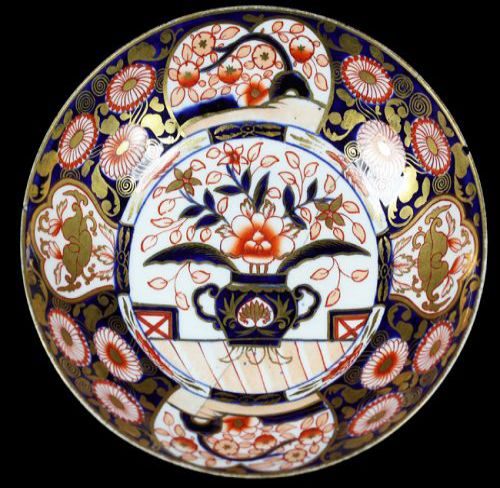 Josiah Spode Date: 1790-1820 A deep saucer decorated in the ‘Imari’ style and colour palette of cobalt blue, iron red and gold. |
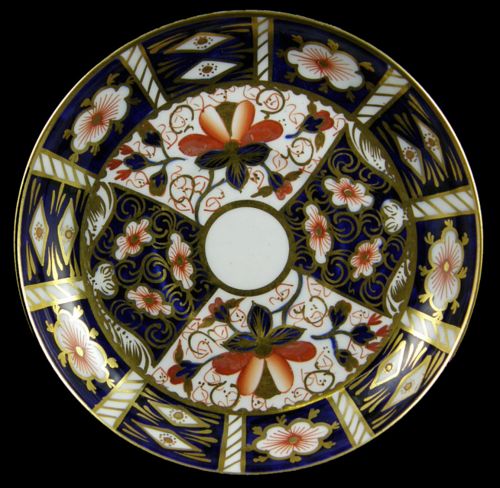 Royal Crown Derby Porcelain Co. Ltd Date: 1900-1910 Typical Royal Crown Derby Imari Ware. This is pattern 2451 in the tableware range |
courtesy: Pottery
Histories
Images: Lema Publishing Ltd, publishers of ‘Tableware International’ www.tablewareinternational.com
Examples of Imari style ware produced by North Staffordshire (English) potters:
John Ridgway & Co c.1830-55 produced ware in a wide range of Imari style patterns
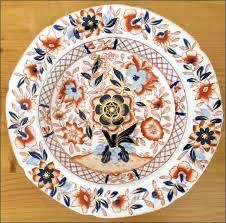 Hicks & Meigh 1807-22 |
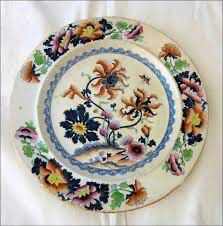 Stephen Folch 1819-29 |
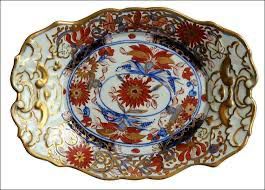 George & Charles Mason 1813-29 |
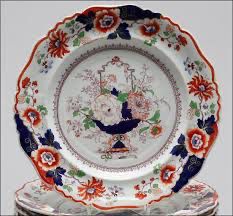 Francis Morley 1845-58 |
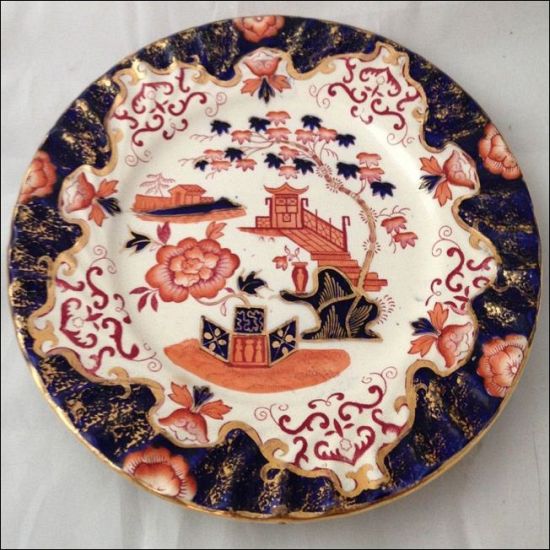
C
Hobson & Son
1865-80
|
While many English pottery continued to produce quality, well decorated Imari-style ware the demand for low-cost ware resulted in decoration which was quickly executed. This example by Charles Hobson & Son is crudely decorated with heavy and imprecisely painted blue and orange areas and thick, varying gold lines. Over time, the term “Imari” came to mean any densely decorated, gilded porcelain featuring Oriental style motifs in vivid shades of gold, green, red, and underglaze blue. |
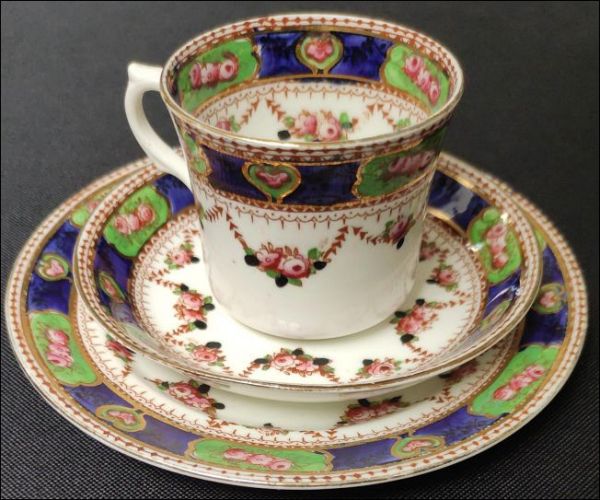 crudely decorated trio by H. J. Colclough in a European Imari style pattern 1897-1937
photos courtesy: Paul Bonas |
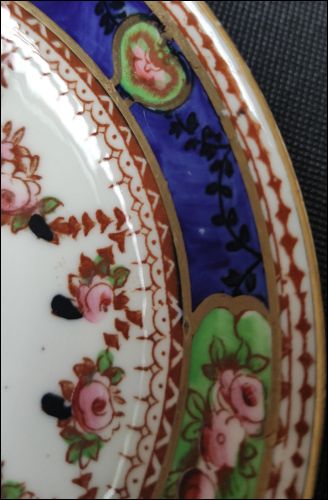
The often crudely applied transparent colour allows the print to show through. Cobalt blue is applied in some of the panels and as accents. |
Clementson Jewel
pattern
|
The Jewel pattern was introduced by Joseph Clementson (1839-64) and incorporates the Phoenix mark which was used on other ware in conjunction with the Clementson name. Little is documented about Morfenix Ware. The name is likely a creative form of “More + Phoenix” - effectively branding this ware as a superior or renewed phoenix line. In 1857 the townships of Hanley and Shelton were incorporated to constitute the municipal borough of Hanley. Morfenix Ware has the town name HANLEY and so is likely to have been produced post 1857.
The pattern is European Imari in style - it is transferware with hand painted colouring and has some distinctive characteristics:
A number of other, later potters produced very similar patterns. |
 teapot in the Jewel pattern by Joseph Clementson c. 1857-1864 |

|
 Morfenix Ware Hanley Jewel |
later potters who copied the Clementson Jewel pattern..
 |
 |
 |
 BCM Clarence Ware Beresford Bros Longton England - Beresford Bros - 1900-1925
|
 Burlington Bone China JSS Limited Made in England - John Shaw & Sons - 1920-1963 |
 Colclough China Made in Longton England Genuine Bone China - Colclough China - 1937-1948 |
photos courtesy: Lauren Davey
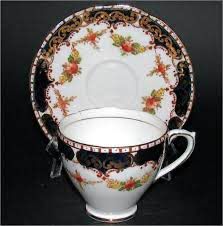 Chapmans 1916-66 |
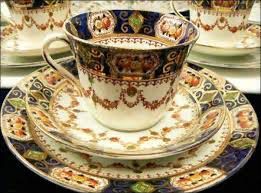 Wild & Adams 1909-27 |
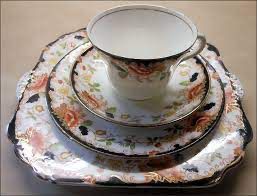 George Procter & Co 1891-1939 |
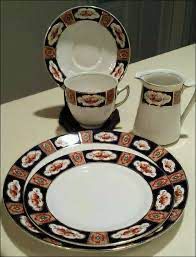 Diamond Pottery Co 1908-35 |
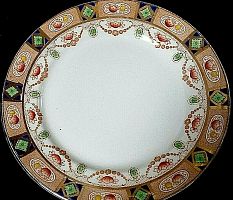 Adams 1769-1966+ |
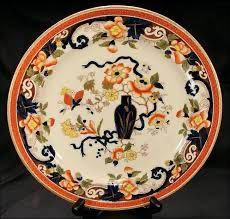 George Jones 1861-1957 |
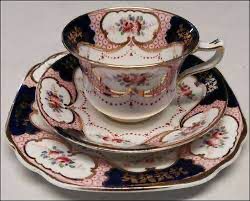 Blyth Porcelain 1903-30 |
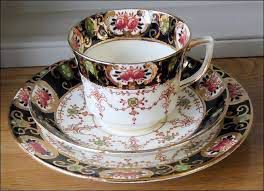 Doric China Co 1924-48 |
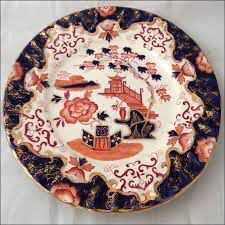 C Hobson 1865-80 |
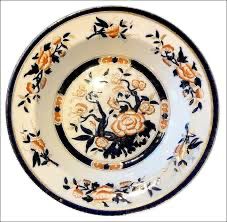 Thomas Forester 1884-87 |
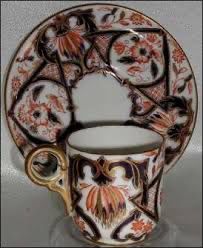 Thomas Bevington 1877-92 |
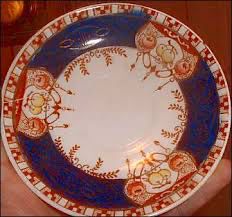 Chapmans 1897-1937 |
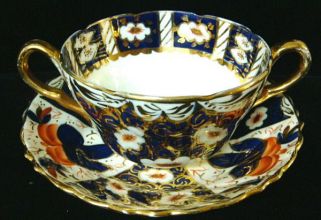 Hanley Porcelain Co 1891-99 |
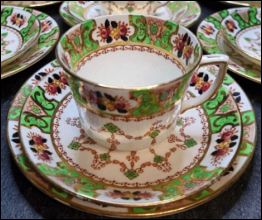 Royal Albion China 1921-48 |
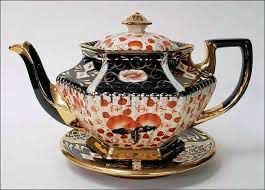 Lingard, Webster & Co 1899-1972 |
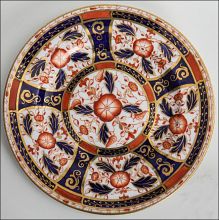 Davenport c. 1870-87 |
|
Page created 21 April 2023 Last updated 12 November 2025: Details of Clementson Jewel pattern and later copies added. |